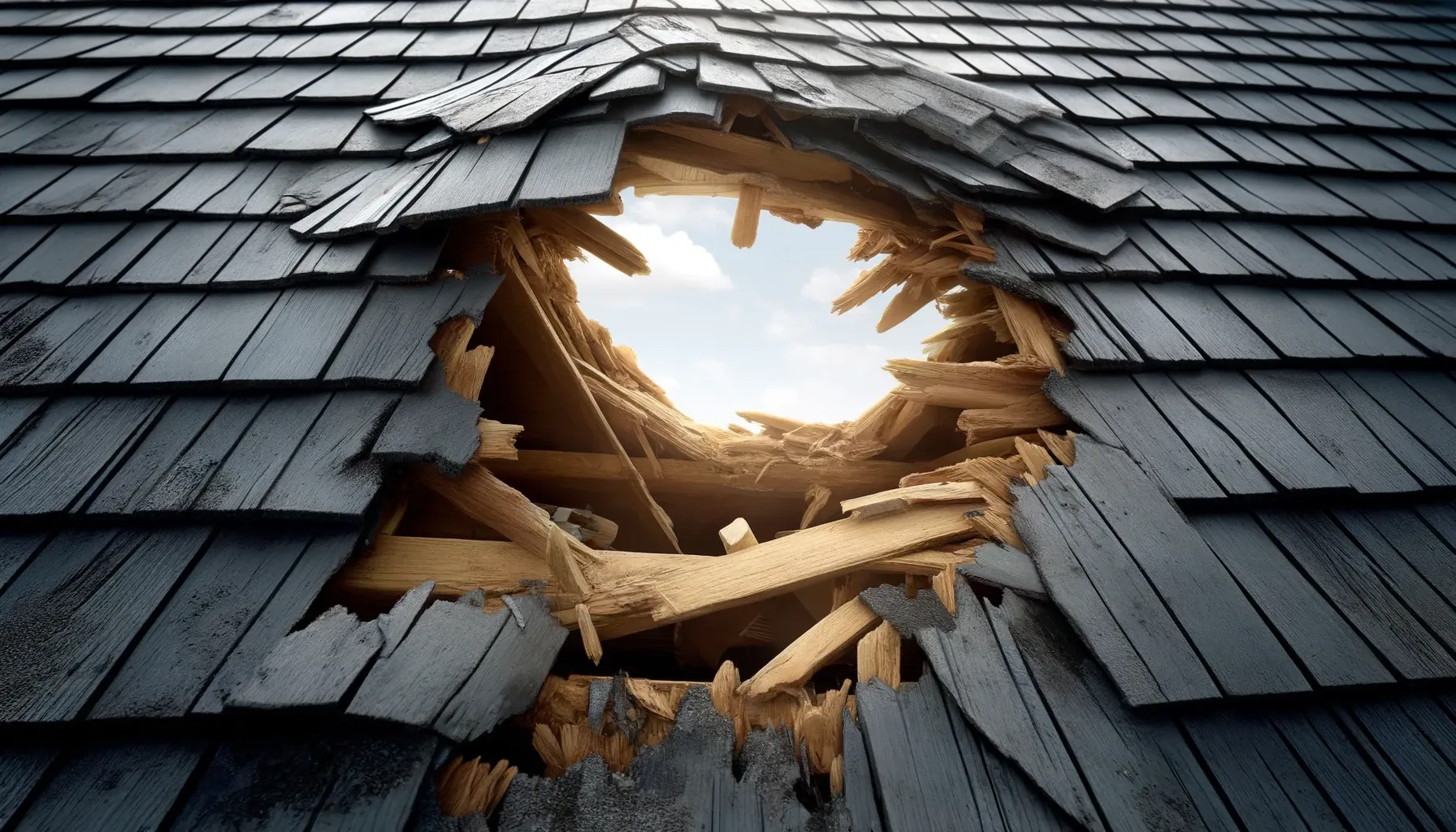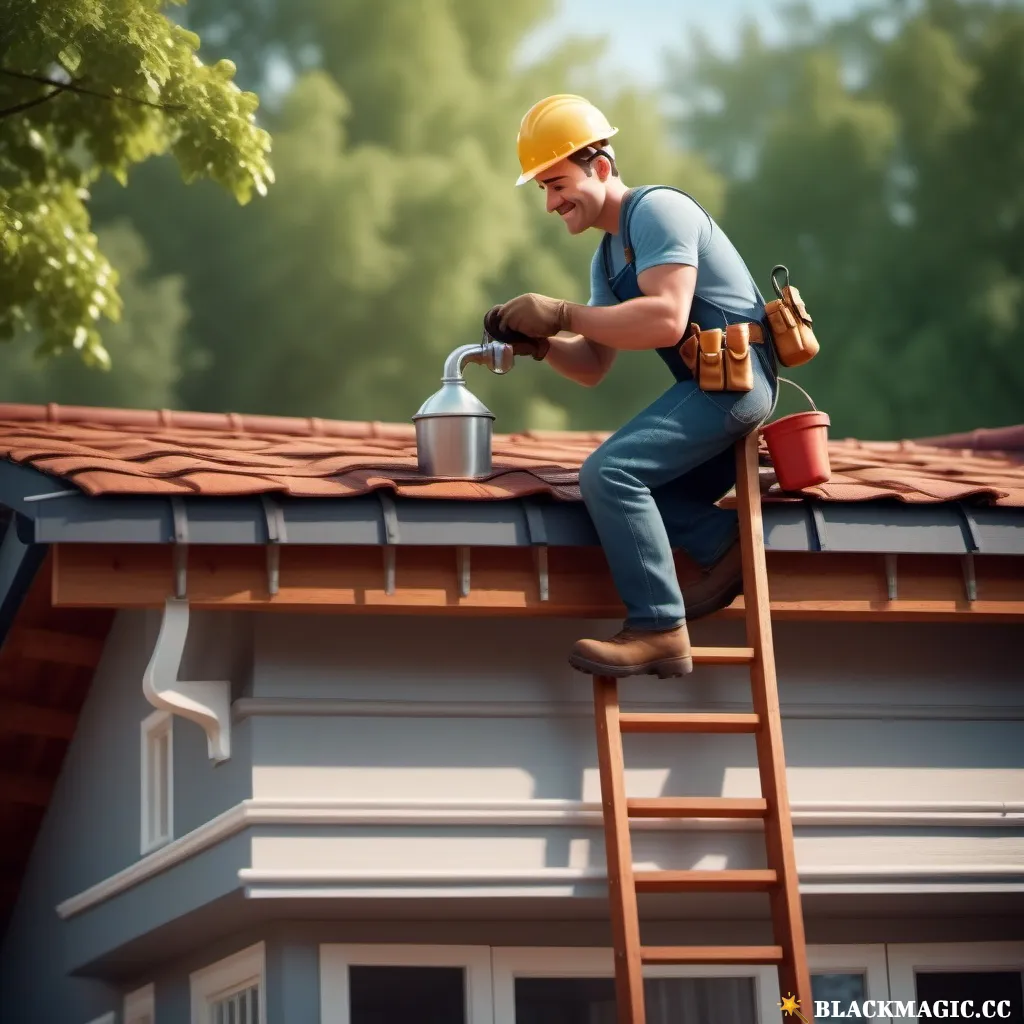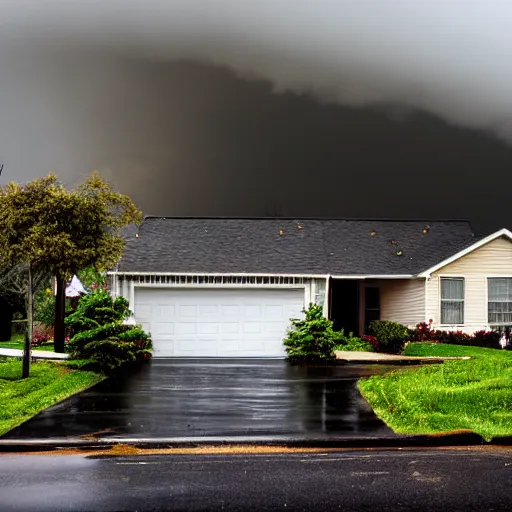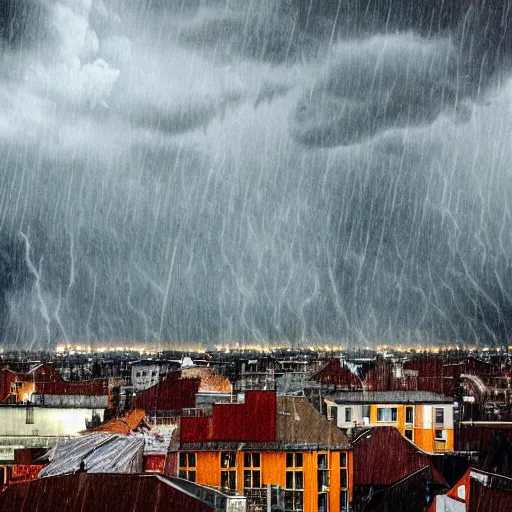What Size Hail Can Damage a Roof
Understanding Hail and Roof Damage
Hail is a common weather phenomenon, especially in regions prone to severe storms. When it comes to the impact on your property, hail can cause significant damage to your roof. In this article, we will explore the different sizes of hail that can potentially damage your roof and what you can do to protect your property.
Importance of Knowing Hail Size
It's essential to understand the size of hail that can cause damage to your roof because different sizes of hail can have varying levels of impact. By knowing what to look out for, you can take preventive measures to minimize any potential damage to your roof.

Factors That Determine Hail Damage on a Roof
Several factors contribute to the damage caused by hail on a roof. The size of the hail is just one of the elements that can impact the severity of the damage. Other factors include the speed and direction of the wind, the density of the hailstones, the angle of impact, and the type of roofing material used.
Size of Hailstones
The size of the hailstones is a critical factor in determining the extent of the damage to your roof. Larger hailstones have more force when they hit your roof, causing more significant damage. Small hailstones may not cause as much damage, but they can still lead to issues, especially if they accumulate over time.
Wind Speed and Direction
The speed and direction of the wind during a hailstorm can impact the intensity of the hail's impact on your roof. Strong winds can propel hailstones with more force, causing more damage to your roof. The direction of the wind can also affect which areas of your roof are most vulnerable to damage.
Hailstone Density
The density of the hailstones can also impact the damage they cause to your roof. Dense hailstones have more mass, which means they can cause more damage upon impact. Lighter hailstones may not cause as much damage, but they can still lead to issues, especially if they are accompanied by strong winds.
Angle of Impact
The angle at which the hailstones strike your roof can affect the severity of the damage. Hailstones that hit your roof at a perpendicular angle are more likely to cause damage compared to hailstones that hit at an oblique angle. The angle of impact can also influence the way the hailstones interact with the roofing material, affecting the extent of the damage.
Type of Roofing Material
The type of roofing material used on your roof plays a significant role in determining the extent of the damage caused by hail. Some roofing materials, like asphalt shingles, are more susceptible to hail damage compared to others, like metal roofing. Understanding the type of roofing material you have can help assess the potential risks and take appropriate measures to protect your roof.
How Roof Damage Occurs
Roof damage from hail can occur in several ways, depending on the size and intensity of the hailstorm. Understanding how hail can damage your roof can help you identify potential issues and take action to prevent further damage.
Impact Damage
One of the most common ways hail can damage a roof is through direct impact. When hailstones hit your roof with force, they can cause dents, cracks, or punctures in the roofing material. The impact can weaken the structure of your roof, leading to potential leaks and water damage.
Granule Loss
Hail can also cause granule loss on asphalt shingles, which can expose the underlying material to the elements. When the protective granules are stripped away, the shingles become more vulnerable to damage from UV rays, wind, and moisture. This can shorten the lifespan of your roof and lead to premature deterioration.
Cracking or Splitting
Large hailstones can cause cracking or splitting in roofing materials like wood shakes or tiles. These cracks can compromise the integrity of the roof, allowing water to seep through and damage the underlying structure. Over time, this can lead to leaks, mold growth, and structural damage.
Loosening of Roofing Material
Hail can also cause the fasteners holding your roofing material in place to become loose or dislodged. This can make your roof more susceptible to wind damage and leaks. Loose roofing material can also create entry points for pests and insects, leading to further issues down the line.

Recognizing Hail Damage on Your Roof
After a hailstorm, it's essential to inspect your roof for any signs of damage. Knowing how to recognize hail damage can help you address any issues promptly and prevent further damage to your property.
Visual Inspection
One of the most visible signs of hail damage on a roof is dents or pockmarks on the roofing material. These indentations may vary in size, shape, and depth, depending on the size of the hailstones and the force of impact. Look for areas of your roof that appear uneven or discolored, as this may indicate hail damage.
Missing Granules
Inspect your gutters and downspouts for signs of granule loss from the roofing material. If you notice an accumulation of granules, this could be a sign that your roof has sustained hail damage. Missing granules can make your roof more susceptible to water damage and deteriorate the shingles over time.
Cracked or Broken Shingles
Check your roof for any cracked, broken, or missing shingles after a hailstorm. These signs of damage can indicate that the hailstones have caused significant impact on your roof. Cracked shingles can expose the underlying structure to water infiltration, leading to leaks and potential structural damage.
Soft Spots or Sagging
If you notice soft spots or sagging areas on your roof, this could be a sign of water damage caused by hail. Hailstones can weaken the integrity of your roof, allowing moisture to seep through and affect the underlying structure. Addressing these issues promptly can prevent more extensive damage to your property.
Preventive Measures to Protect Your Roof from Hail Damage
While you cannot control the weather, there are steps you can take to minimize the risk of hail damage to your roof. By implementing preventive measures, you can protect your property and potentially extend the lifespan of your roof.
Invest in Impact-Resistant Roofing Materials
Consider investing in impact-resistant roofing materials that can better withstand hail and other severe weather conditions. Metal roofing, asphalt shingles with impact-resistant ratings, and composite shingles are some options to consider. These materials are designed to absorb the impact of hailstones and reduce the risk of damage to your roof.
Maintain Your Roof Regularly
Regular maintenance of your roof can help identify and address any issues before they escalate. Inspect your roof periodically for signs of damage, loose or missing shingles, and deteriorating flashing. Addressing minor repairs promptly can prevent more extensive damage during a hailstorm.
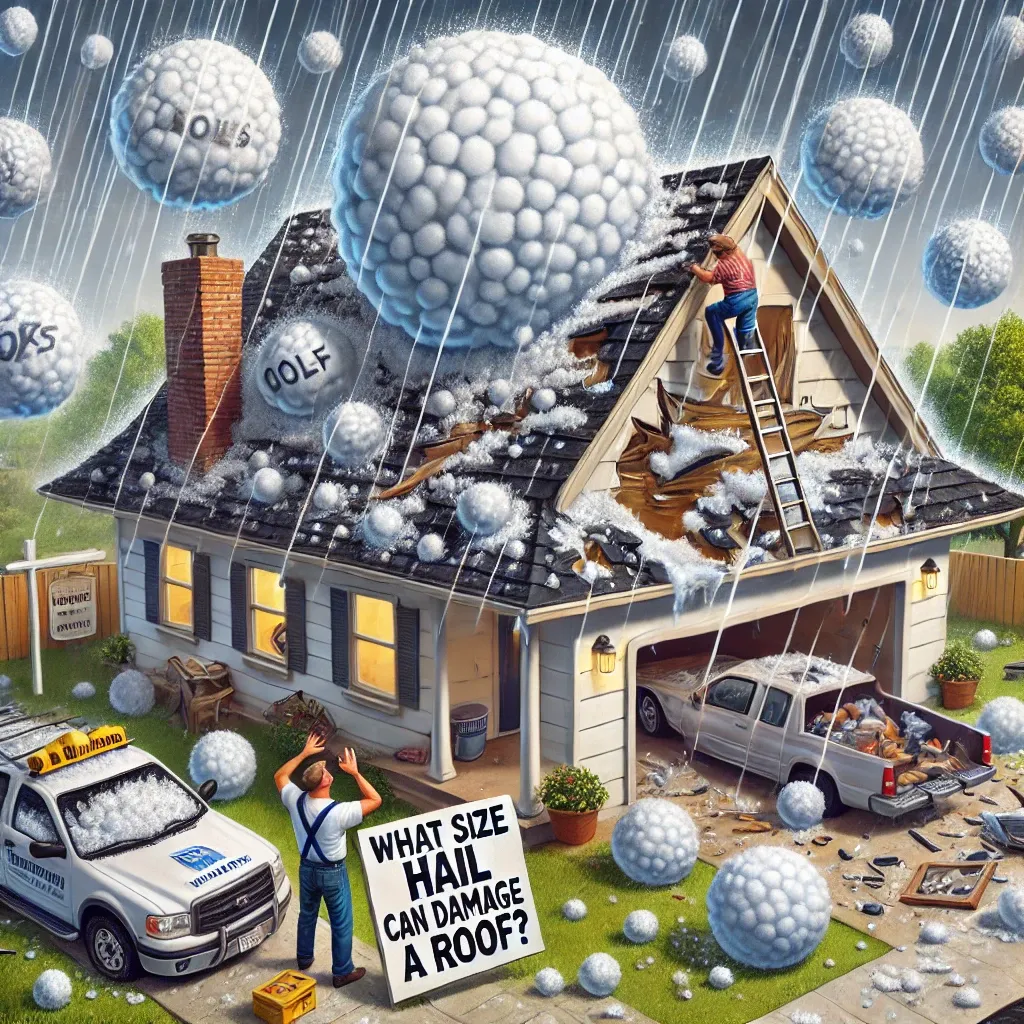
Trim Overhanging Branches
Overhanging branches can pose a risk to your roof during a hailstorm. Trim back any branches that hang over your roof to minimize the risk of impact damage from falling debris. Keeping your roof clear of obstacles can reduce the potential for hail damage and protect the integrity of your property.
Install Hail Guards
Hail guards are protective coverings that can be installed on your roof to minimize the impact of hailstones. These guards act as a barrier between the hailstones and your roofing material, reducing the force of impact and potential damage. Consider installing hail guards if you live in an area prone to severe hailstorms.
Understanding the size of hail that can damage a roof is crucial for protecting your property from potential damage.
By knowing the factors that contribute to hail damage, recognizing the signs of damage, and implementing preventive measures, you can minimize the risk to your roof and maintain the integrity of your property.
If you suspect your roof has sustained hail damage, contact a professional roofing contractor to assess the extent of the damage and recommend the necessary repairs. Remember, proactive measures can go a long way in protecting your roof from hail damage and preserving the value of your home.

